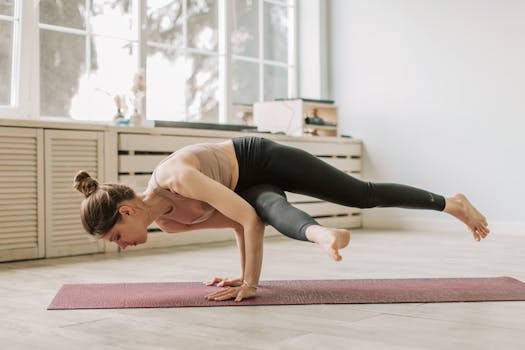
30-Day Yoga Flexibility Challenge to Improve Your Practice
Introduction to the Challenge
30-Day Yoga Flexibility Challenge is a great way to improve your yoga practice, increase flexibility, and reduce stress. This challenge is designed to help you establish a daily yoga routine, focus on specific poses, and track your progress. In this article, we will guide you through the 30-day challenge, provide you with daily routines, and offer tips to help you achieve your goals.
Benefits of the Challenge
- Improved flexibility and range of motion
- Increased strength and balance
- Reduced stress and anxiety
- Improved overall well-being
Daily Routine for the Challenge
For the next 30 days, we will provide you with a daily yoga routine that targets specific areas of the body. Each day, you will practice a series of poses that will help you improve your flexibility, balance, and strength.
Week 1: Foundational Poses
In the first week, we will focus on foundational poses that will help you establish a strong yoga practice. These poses include:
- Mountain Pose (Tadasana)
- Downward-Facing Dog (Adho Mukha Svanasana)
- Cobra Pose (Bhujangasana)
- Child’s Pose (Balasana)
Week 2: Hip Openers and Forward Folds
In the second week, we will focus on hip openers and forward folds. These poses include:
- Pigeon Pose (Eka Pada Rajakapotasana)
- Seated Forward Fold (Paschimottanasana)
- Standing Forward Fold (Uttanasana)
- Tree Pose (Vrksasana)
Week 3: Backbends and Twists
In the third week, we will focus on backbends and twists. These poses include:
- Cat-Cow Pose (Marjaryasana-Bitilasana)
- Cobra Pose (Bhujangasana)
- Seated Twist (Bharadvajasana)
- Sphinx Pose (Salamba Bhujangasana)
Week 4: Balancing Poses and Final Stretch
In the final week, we will focus on balancing poses and final stretch. These poses include:
- Tree Pose (Vrksasana)
- Eagle Pose (Garudasana)
- Headstand (Sirsasana)
- Shoulder Stand (Viparita Karani)
Tips for the Challenge
To get the most out of the challenge, follow these tips:
- Listen to your body and modify or rest when needed
- Practice on an empty stomach or at least 2-3 hours after meals
- Stay hydrated by drinking plenty of water
- Use props such as blocks, straps, or blankets to support your practice
Conclusion
The 30-day yoga flexibility challenge is a great way to improve your practice, increase flexibility, and reduce stress. By following the daily routines and tips provided, you will be able to establish a strong yoga practice and achieve your goals. Remember to listen to your body, stay hydrated, and use props to support your practice. With dedication and consistency, you will be able to see improvement in your flexibility and overall well-being.





